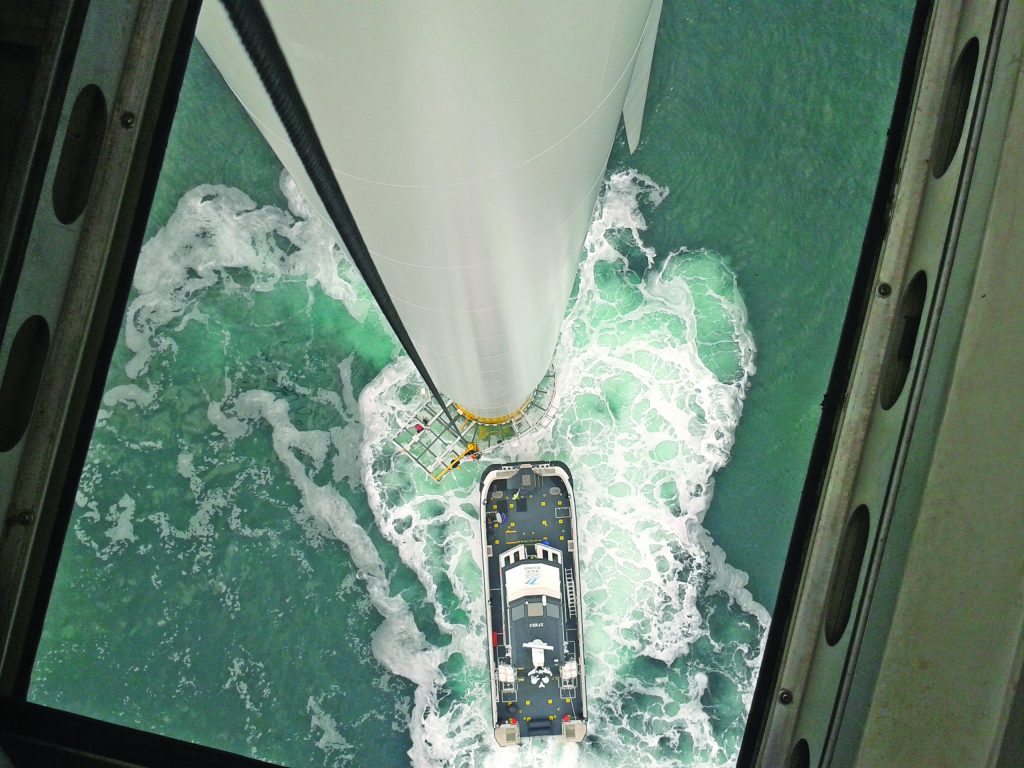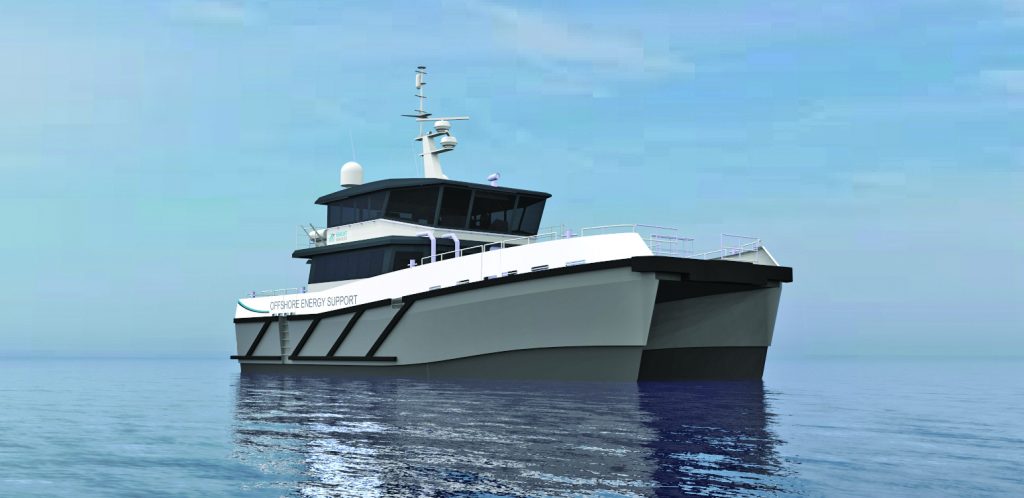It’s no secret that, to build an offshore wind industry, you first need to build boats. U.S. offshore wind is still nascent, but, with considerable state-driven ambitions and a national strategy in place, the Department of Energy found that the U.S. could install a total of 22,000 MW of offshore wind projects by 2030.
Bringing about this huge increase in capacity will not just depend on the availability of specialist jack-ups, SOVs, and large installation vessels, it will also require a full modern fleet of crew transfer vessels (CTVs), which are essential for transporting technicians and equipment safely to the turbines.
In turn, ensuring a steady supply of specialist Jones Act compliant CTVs — while capitalizing on the proven attributes that characterize the most successful vessel designs in the global offshore wind market — requires ongoing investment in a robust domestic supply chain and significant international cooperation.
U.S. shipyards and vessel operators have an opportunity to gain a first-mover advantage by identifying the vessel designs that will both meet the standards expected by international offshore wind farms and fulfill the unique demands of operation off the East Coast.
Thus far, this has manifested itself in a number of cross-Atlantic consultancy agreements between vessel operators in the U.S. and Europe, alongside more substantial arrangements that will see European operators — for the time being — effectively manage the operations of CTV fleets built and owned by American firms.
It has also, excitingly, led to the first vessel orders being placed with U.S. shipyards. Blount Boats claimed the milestone of building the first U.S.-flagged CTV back in 2015 with Atlantic Pioneer, but now the expected demand for vessels has become increasingly clear, the building of the first full batch of American offshore wind workboats is starting at shipyards on the East Coast.

Next-Generation Vessel Designs
Significantly, these boats will be a new breed of “next-generation” CTVs that capitalize on a decade of experience in offshore wind construction and operation. In terms of design, this means that they will be optimized to allow vessel operators to meet the core metrics of safety, technical performance, and availability that are critical to offshore wind support.
The Chartwell 24, for instance, has been designed to maximize technician safety and comfort with features such as a completely step-free foredeck. The role of the modern CTV encompasses “crew transfer” and logistical support in equal measure, so the foredeck is also as large as possible to accommodate essential supplies and equipment. In terms of technical performance, which is essential to keep vessels on the water and projects on track, the Chartwell 24 design benefits from a tank-tested hull form that is proven to handle challenging sea states and built-in redundancy in its propulsion systems to minimize any potential downtime.
Similar attributes are shared by the other CTV designs that are expected to see widespread adoption in U.S. waters. These will largely follow the principle that the vessels that have proven most effective in European operation — i.e. the 22- and 24-meter catamaran — will also most effectively meet U.S. needs, with the exception of some market-specific adaptations.
These adaptations include hull forms that have been modified to meet the requirements of legislation protecting the migration route of the right whale off the U.S. East Coast and propulsion configurations optimized to meet EPA Tier 4 emissions standards. Chartwell recently announced a new deal with U.S. companies, Atlantic Wind Transfers and Blount Boats, for a pair of vessels meeting these specifications, a Chartwell 24 variant modified specifically to perform optimally in rough Atlantic conditions while complying with local regulations.
Maintaining Vessel Supply
The “formula” for East Coast CTV support is, by now, becoming increasingly established — as demonstrated by this agreement. The growing trend of proven vessel designs that are tailored for the U.S. market highlights the benefits to be gained from building knowledge transfer between global OESV markets into best practice going forward.
However, vessel design is just one part of the equation; maintaining vessel supply in order to meet expected demand is another. Global experience — and, indeed, U.S. experience in the onshore sector — dictates that offshore wind follows “boom and bust” construction cycles. Periods of heightened construction are often followed by natural lulls in activity, and a long-term outlook is required to find a balance between putting sufficient numbers of boats into build to meet demand during the high points, while ensuring that existing fleets are kept busy in quieter periods.

In Europe, for example, following a temporary slowdown in new builds a couple of years ago, the most capable 22- and 24-meter CTVs are currently in very high demand, which in some cases has created constraints for project owners.
This is naturally a scenario that American vessel operators and the wider supply chain will look to avoid. A slowdown in offshore wind vessel orders and competition from other thriving maritime sectors could encourage U.S. shipyards to look for opportunities elsewhere, so it is important that the industry builds momentum now in order to ensure it is well-placed to meet future demand.
Hitting the Ground Running
It has been said numerous times before, but, with the significant ambitions of U.S. East Coast states turning into concrete plans, the U.S. offshore wind sector has a clear opportunity to start on the front foot in critical areas such as CTV support.
By establishing a robust CTV supply chain and ensuring continued investment in proven, high-quality vessels, the U.S. market will not only put in place one of the essential building blocks for successful offshore wind development and operation, but also provide a significant boost to shipyards and maritime businesses off the East Coast.
























